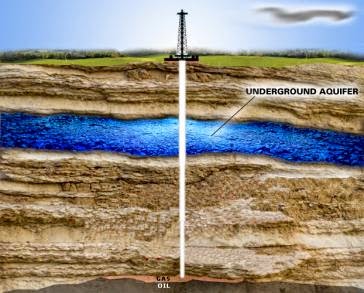Shale
 Shale is a sedimentary rock composed of fine grained sediments mainly silt and clay particles ranges at size of 1/256 millimetre. Shale is in a category of mudstone but is different from other mudstone as the rock comprises laminae (thin beds) and is also fissile (breaks into particles).
Shale is a sedimentary rock composed of fine grained sediments mainly silt and clay particles ranges at size of 1/256 millimetre. Shale is in a category of mudstone but is different from other mudstone as the rock comprises laminae (thin beds) and is also fissile (breaks into particles). Composition
Shale is composed of clay size particles, it includes fine grains as illite, kaolinite and smectite. Other particles can also be in the shale which are finer grains of quartz, feldspar and chert. Shale also contains organic material which are marine plants and animals deposited at the sea floor. Other constituents can also be carbonate particles, iron oxide minerals, sulphide minerals and heavy minerals. These particles are the indicator of shale depositional environment.
Uses
Shale properties have important uses, as it contain organic material that can produce oil and gas when cooked at proper depth with high pressure and temperature. Shale can also be used as constituent material for producing cement. Limestone and shale are crushed and heated together to a temperature greater enough to eliminate all water content and breaks limetone into calcium oxide and carbon dioxide. With mixture of shale and calcium oxide a powder is formed that harden when water is mixed in it.
Other than this shale can also be used to produce clay by mixing fine grained shale with water. This clay is then used to produce brick which is the building block of any building.
Colour of shale
Black and grey
The colour black and grey in a sedimentary rock is the indicator, presence of organic material in the rock. The organic material present in the shale is deposited by the animal and plant debris at the ocean floor. This organic material is not decayed because of the oxygen deficient environment or otherwise all the organic matter would have decayed. The oxygen deficient environment also provide proper conditions for production of sulphide minerals as pyrite. This organic material with oxygen deficient environment produces oil and gas. For production of oil and gas proper burial depth and pressure, temperature is important.
Red, brown and yellow
The colour as brown, red and yellow of a shale is the indicator of oxygen rich environment and presence of iron oxide or iron hydroxide such as hematite, goethite or limonite. Less amount of this can give the colour throughout the rock body. Hematite gives red colour and goethite or limonite presence give the colour of brown or yellow.
Green colour
Green colour of the shale are by the mica or other minerals present in the shale consist of greenish colour which turns the shale green.
Oil and gas shales
 Oil shale
Oil shale
The term oil shale refers to sedimentary rocks of clay and silt size that contain bituminous material (Kerogens) which releases petroleum like liquid when heated in a process of pyrolysis. Oil shale production started million of years ago as that of the oil generations. Oil shale generated by the deposition of organic debris at bottom of lake or sea but when buried the heat and pressure was not great enough to turn it into oil and gas source rock. These rock catch fire without adding any chemical because of its oil.
Shale gas
Shale gas is referred to gas that is trapped in the shale and cannot escape shale (source rock) to the reservoir rock. Marcellus shale of the Marcellus formation have a lot of gas which can be recovered by unconventional method.
Conventional oil and gas recovery
 Conventional Method
Conventional Method
Organic shales are the source rock for most oil and gas production. So these organic material is turned into petroleum when buried at great depths with high pressure and temperature. The petroleum then moves from source rock into reservoir rock by the squeezing of shales through overburden. These when migrated to reservoir rock moves to height due to its low density till the time when it is trapped at a certain blockage where petroleum cannot moves further. So for extraction of such oil and gas a well is drilled above the trap and oil is extracted.
Unconventional oil and gas
 Unconventional or horizontal drilling
Unconventional or horizontal drilling
Unconventional oil and gas recovery is the technique used by extracting oil and gas from the tiny pores of shales which are not inter connected so therefore a directional drilling method is used where well is drilled horizontal into the source rock. The source rock is fractured by hydraulic fracturing and the recovery is made for the trapped oil and gas in the shales.
Hydraulic properties
Hydraulic properties are characteristics of a rock such as porosity and permeability which intends on the properties of holding and transmitting liquids through it.
The shales are made up of tiny particles so its pore spaces will also be small. The small pores can trap water or oil and gas but their movement within the rock is difficult. As no movement of liquids can be allowed through shales but due to the small pores present, it can take large amount of liquids. Shales can serve as a seal rock but not as a reservoir.
Expansive properties
Clay minerals in some soils of shales have the tendency to absorb and release large amount of water. These soil swells when it absorbs water and shrinks on release. These derived soils must be check for the construction of building or road to reduce maintenance cost at later stages.
Slope stability
Shales are often associated with landslides as weathering of shales turns them into clay material that when wet have low shear strength. On a hill side and wet shales, will creep or move rapidly along the slope.